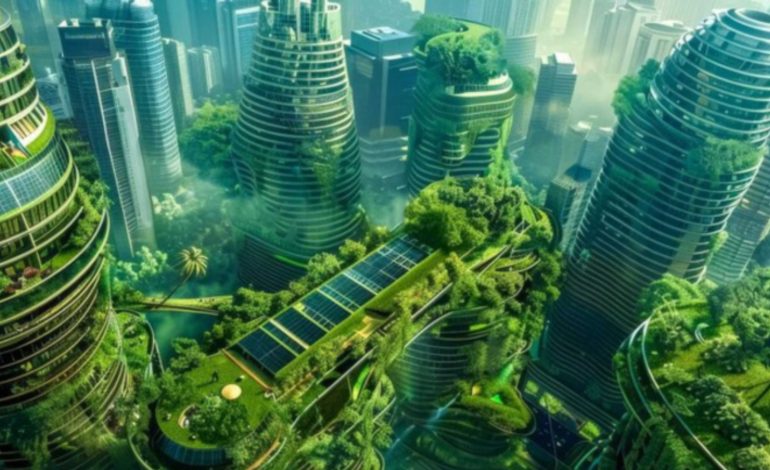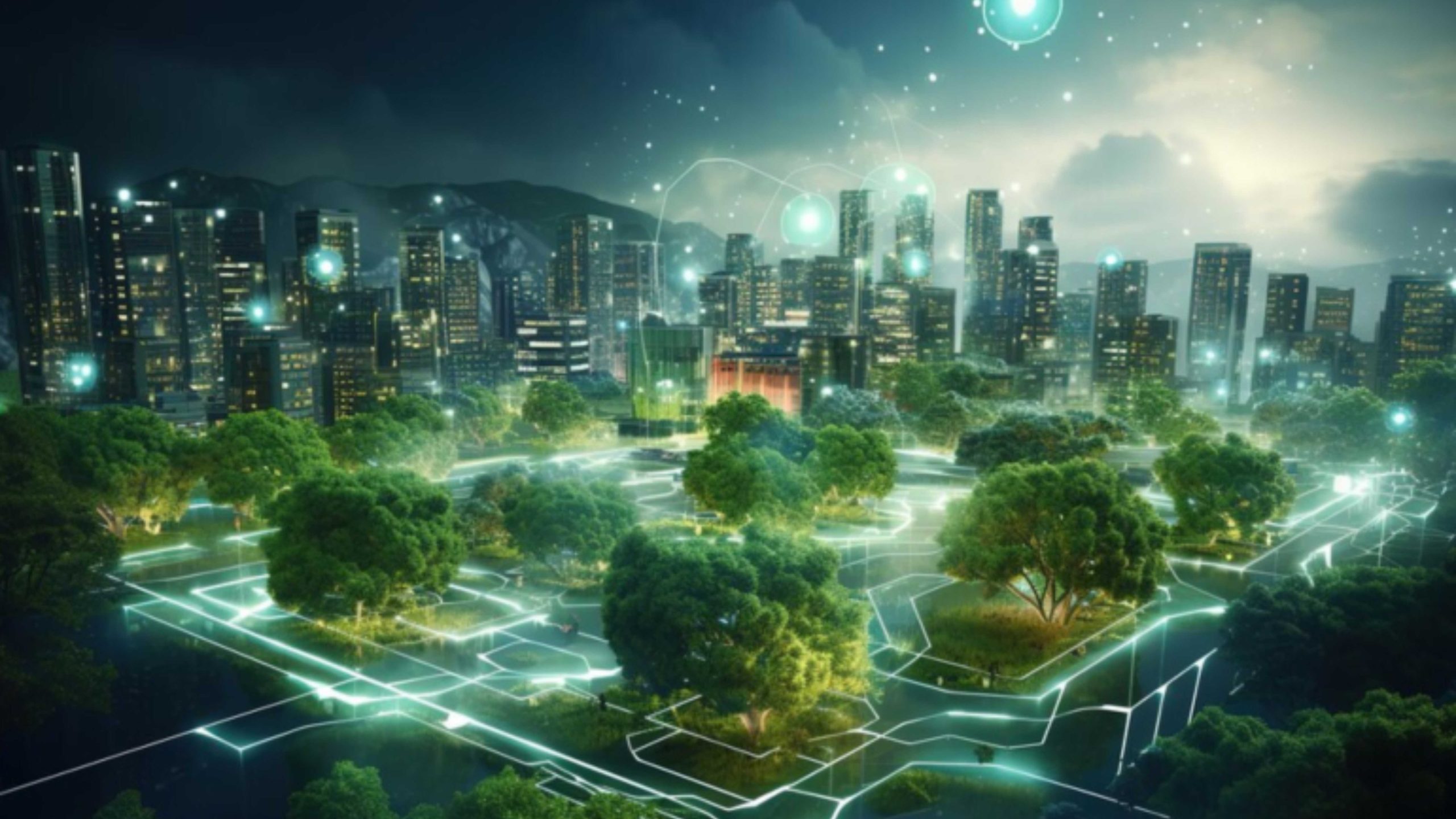
Green Building Technologies: Designing Energy-Efficient and Eco-Friendly Structures
Green construction technologies have become increasingly popular as a result of the increased emphasis on sustainability that has been seen globally in recent years. By encouraging the creation of environmentally friendly and energy-efficient buildings, these technologies are completely changing the construction sector. Green building technologies are changing the way we design, build, and occupy buildings by lowering carbon footprints and improving occupant comfort. We explore the relevance, advantages, and cutting-edge applications of green building technologies in this blog.
Understanding Green Building Technologies
Defining Green Building
Green building, sometimes referred to as sustainable or eco-friendly building, includes methods of design, construction, and operation that drastically minimize or completely eradicate adverse effects on the environment and its people. It entails combining cutting-edge technologies, energy-saving systems, and sustainable materials to build structures that reduce resource use and environmental damage.
The Evolution of Green Building Technologies
With the development of technology and increased environmental concerns, the idea of “green building” has changed over time. Early campaigns concentrated on fundamental energy-saving techniques like insulation and effective lighting. However, the sophistication of green construction technology has risen with the rise in environmental awareness. Modern green buildings use state-of-the-art techniques to attain maximum sustainability, such as enhanced insulating materials, solar panels, and rainwater collection systems.
Key Components of Green Building Technologies
-
Sustainable Materials
Using sustainable resources is one of the core ideas of green building. These materials have low embodied energy, which means that less energy is needed for their extraction, processing, and transportation. They are also ethically sourced, frequently from recycled or renewable sources. Low-impact concrete, bamboo, recyclable steel, and repurposed wood are a few examples. Buildings can promote the circular economy and lessen their environmental impact by using sustainable materials.
-
Energy-Efficient Systems
The foundation of green building technologies is energy efficiency. Since buildings use a large amount of the energy consumed worldwide, energy-efficient building design is essential. High-performance insulation, LED lighting, and sophisticated HVAC (heating, ventilation, and air conditioning) systems are examples of energy-efficient technologies that help lower energy consumption while preserving occupant comfort levels. Smart building technology also allows for exact management and optimization of energy usage, such as automated thermostats and lights.
-
Renewable Energy Sources
A feature of green building design is the utilization of renewable energy sources. Among the most widely employed renewable energy technologies in buildings are geothermal heat pumps, solar panels, and wind turbines. By producing renewable energy locally, these systems lessen reliance on fossil fuels and help to reduce greenhouse gas emissions. Buildings that include renewable energy sources are more resilient to supply disruptions and variable energy prices, in addition to having reduced operating costs.
-
Water Conservation Strategies
Due to the urgent worldwide problem of water shortage, water conservation is an essential component of green construction technology. In order to reduce water usage, buildings integrate a variety of water-saving techniques, such as dual-flush toilets, low-flow fixtures, and greywater recycling systems. Rainwater harvesting systems further lessen dependency on municipal water supplies and ease pressure on water resources by collecting and storing rainwater for non-potable needs like irrigation and toilet flushing.
Benefits of Green Building Technologies
-
Environmental Sustainability
The capacity of green building technology to promote environmental sustainability may be their greatest advantage. Green buildings contribute to mitigating climate change, preserving ecosystems, and promoting biodiversity by minimizing energy usage, generating less waste, and preserving natural resources. They act as role models for sustainable development, proving that environmental stewardship and economic prosperity are compatible.
-
Energy Savings
Since green buildings use less energy by nature, they save a lot of money over the course of their lifetime. These buildings use less energy for heating, cooling, and electricity because of improved insulation, energy-efficient lighting, and renewable energy systems. As a result, owners and renters pay less for utilities. To further encourage investment in green technologies, government certification programs and incentives are offered for energy-efficient buildings.
-
Improved Indoor Air Quality
The comfort and health of occupants are greatly impacted by indoor air quality (IAQ). IAQ can be harmed by volatile organic compounds (VOCs) and other contaminants found in traditional building materials and furniture. Green buildings, on the other hand, give preference to materials with low volatile organic compounds (VOCs) and include ventilation systems that improve air filtering and circulation. Residents benefit from cleaner, healthier interior spaces with fewer chances of allergies and respiratory problems as a result.
-
Enhanced Occupant Comfort
Green building technologies put occupant comfort and well-being first by using creative solutions and well-thought-out design. By maximizing the amount of natural light exposure, daylighting techniques lower the demand for artificial lighting while enhancing mood and productivity. Thermal mass systems and improved insulation control interior temperatures, reducing temperature swings and guaranteeing year-round comfort. Acoustic treatments also reduce noise pollution, making living and working spaces calmer and more comfortable.
Innovations in Green Building Technologies
-
Net-Zero Energy Buildings
The ultimate in energy-efficient architecture, net-zero energy buildings (NZEBs) generate as much energy as they use in a year. To attain a net-zero energy balance, these buildings combine energy-efficient equipment, passive design techniques, and renewable energy generation. NZEBs are becoming more practical and affordable because of developments in design and technology, opening the door for a built environment that is carbon neutral.
-
Biophilic Design
Through the incorporation of natural materials and patterns into the built environment, biophilic design aims to restore residents’ connection to the natural world. Green roofs, living walls, and interior gardens are examples of features found in green buildings that incorporate biophilic principles and improve aesthetics, air quality, and mental health. Biophilic design strengthens the sustainability ethos of green buildings and increases occupant pleasure and productivity by promoting a closer connection to the natural world.
-
Zero Waste Initiatives
Green buildings seek to minimize energy use as well as waste generation and to encourage recycling and reuse. Zero waste projects aim to reduce the quantity of garbage that ends up in landfills by giving priority to waste diversion measures including composting, recycling, and material recovery. Green buildings reduce resource depletion and promote a circular economy by adopting closed-loop systems and sustainable procurement methods, which see waste as a valuable resource.
Conclusion
Green building technologies, which offer a comprehensive approach to sustainability that takes into account social, economic, and environmental factors, represent a paradigm change in the construction sector. Green buildings show that it is possible to create structures that minimize environmental impact while boosting occupant comfort and well-being. This is achieved through the integration of sustainable materials, energy-efficient systems, and creative design ideas. Green building technologies will be crucial in determining how our built environment develops in the future and constructing a more resilient and sustainable future for future generations as the need for sustainable development grows.





